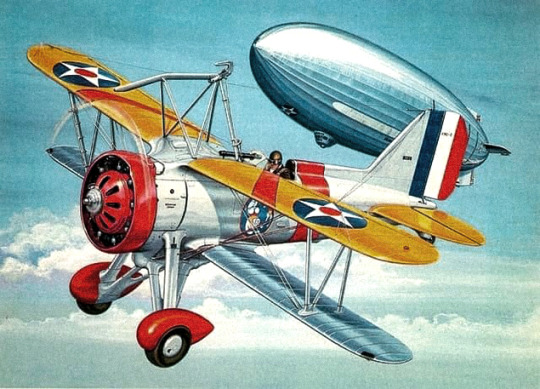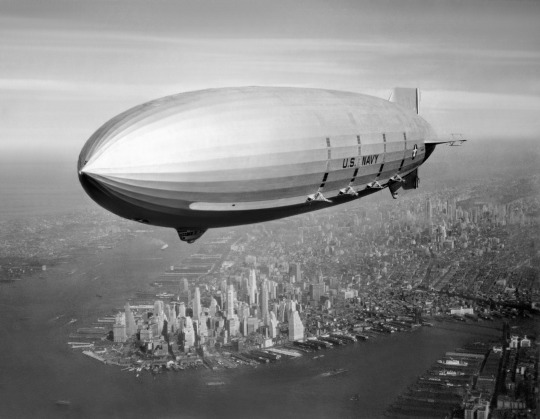#curtiss f9c sparrowhawk
Explore tagged Tumblr posts
Text

Curtiss F9C Sparrowhawk Airship Fighter seen with the USS Macon mothership - 1932.
#curtiss f9c sparrowhawk#uss macon#usn#us navy#u.s. navy#military aircraft#fighter aircraft#airships#flying aircraft carrier#us military#u.s. military#vintage aircraft#dirigibles#1930s#the 30s#curtiss-wright#curtiss aircraft
11 notes
·
View notes
Text

Curtiss F9C Sparrowhawk. First flown 12 February 1931.
Suitably modified & fitted with a ‘skyhook, 6 of these F9C-2s were ordered by the US Navy & used until 1937, its small dimensions made it ideal for use from the dirigibles USS Akron & Macon which had internal hangar bays.
@AirrecC via X
6 notes
·
View notes
Text

There are some astonishing photographs of airships on the Internet. Here is the USS Macon releasing Curtiss F9C-2 Sparrowhawk fighters, presumably somewhere over Germany. These things were enormous, weren't they? This one could carry up to five biplanes, all of which had a pilot and were armed with machine guns. How all this stuff is made is far beyond my comprehension. I'll post some more pics over time, otherwise the blog is going to get swamped with airships and will look a bit weird.
Source: 'Historic Photographs' page on Fakebook.
1 note
·
View note
Photo

Curtiss F9C-2 Sparrowhawk. Hanging from the trapeze of USS Macon. In 1933.
36 notes
·
View notes
Photo

USS Macon Aircraft Carrier over New York Harbor, Summer 1933 USS Macon (ZRS-5) rigid airship, helium-filled, capable of carrying five biplane single-seat Curtiss F9C Sparrowhawk or two-seat Fleet N2Y-1 aircraft. Source: NHCC NH 43901
#Airship#Zeppelin#Aircraft Carrier#1935#1930s#U.S. Navy#US Navy#art deco#streamline moderne#uss macon
7 notes
·
View notes
Video
9056 FC3-2 Curtis F9C-2 Sparrowhawk by RedRipper24 Via Flickr: Operating from U.S. Navy airships during the early 1930s, diminutive Curtiss F9C-2 Sparrowhawks tested one of the more imaginative ideas in aviation history. Deployed with the USS Akron and Macon, they turned these airships into flying aircraft carriers. The airplanes, which could be released and recovered in flight, were to be used for attack, for defense of the airships, and to greatly increase search range for the Navy's giant, helium-filled dirigibles. Steven F. Udvar-Hazy Center Smithsonian National Air and Space Museum Chantilly, VA
51 notes
·
View notes
Photo

United States Navy airship USS Akron, encounters severe weather and crashes into the Atlantic off the coast of New Jersey. 73 passengers and crew, including Rear Admiral William A. Moffett, were killed. It did not have the Curtiss F9C Sparrowhawks deployed aboard when it was lost. The new Naval Airship Station at Sunnyvale, California is named Moffett Field in honour of the lost admiral.
4 notes
·
View notes
Video
Curtiss F9C Sparrowhawk by Willard Womack Via Flickr: These were small planes which could be carried inside a dirigible, launched and recovered by the hook on top of the plane and a trapeze type, retractable bar mounted on the dirigible. Although armed, they were more important as a reconnaissance craft, which could cover a much greater area that the slow gas filled dirigible. The USS Akron had three, and the USS Macon still had it's four on board when found in its watery grave where it had crashed in 1935. Of the eight built, this one is the only survivor..
5 notes
·
View notes
Video
Curtiss F9C-2 Sparrowhawk BuNo A9056 by Batman_60 Via Flickr: this small fighter, which operated from the Navy's rigid airships is equipped with a large overhead hook used to snare the trapeze upon which it was hoisted into the belly of the mother ship. Photo May 2, 1932. This aircraft is currently on display in the National Naval Air Museum, Pensacola, FL, on loan from the NASM. Possibly cannibalized using parts of F9C-2 A9057 and the XF9C-2 9264.
8 notes
·
View notes

